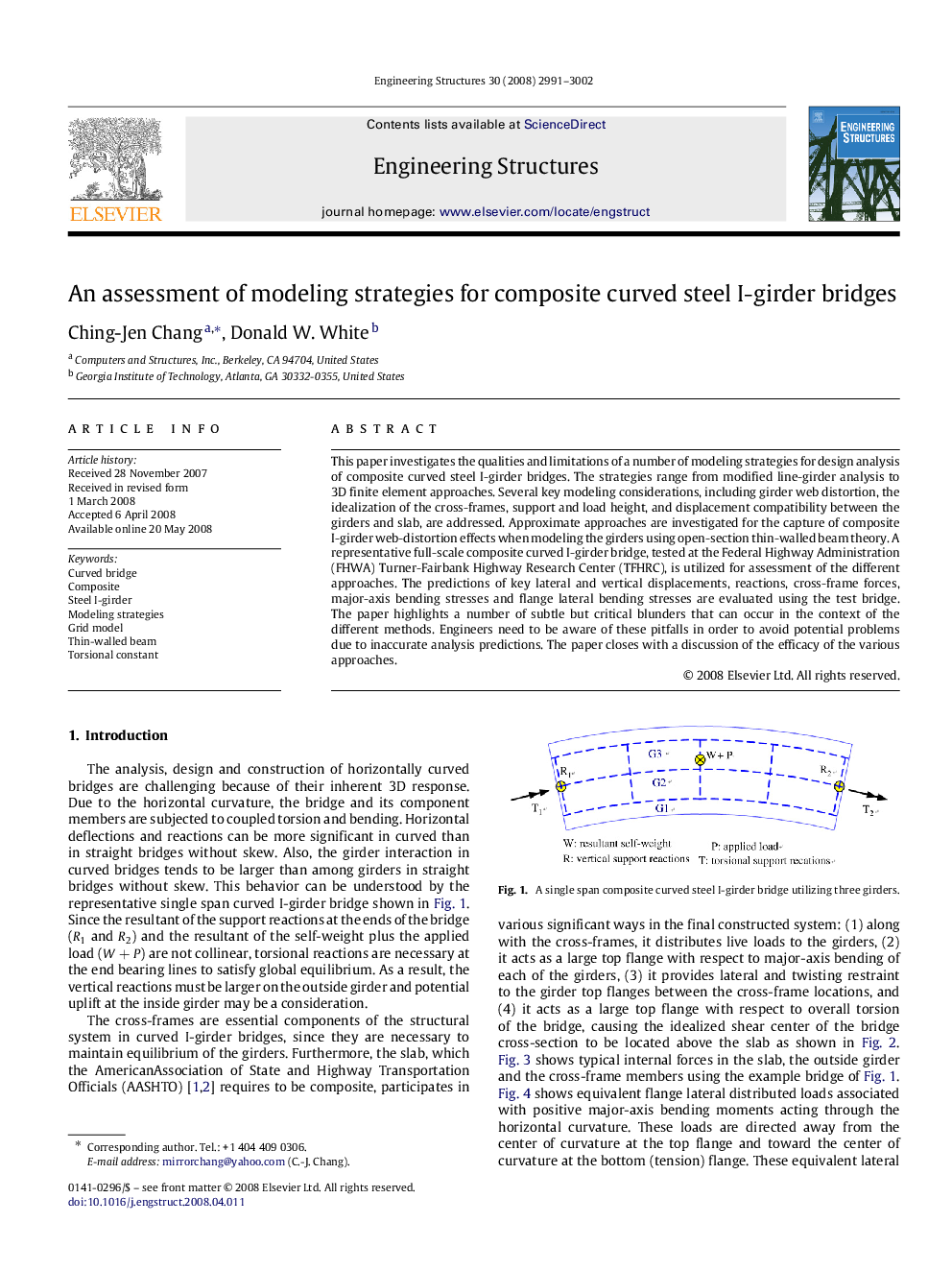| Article ID | Journal | Published Year | Pages | File Type |
|---|---|---|---|---|
| 268773 | Engineering Structures | 2008 | 12 Pages |
This paper investigates the qualities and limitations of a number of modeling strategies for design analysis of composite curved steel I-girder bridges. The strategies range from modified line-girder analysis to 3D finite element approaches. Several key modeling considerations, including girder web distortion, the idealization of the cross-frames, support and load height, and displacement compatibility between the girders and slab, are addressed. Approximate approaches are investigated for the capture of composite I-girder web-distortion effects when modeling the girders using open-section thin-walled beam theory. A representative full-scale composite curved I-girder bridge, tested at the Federal Highway Administration (FHWA) Turner-Fairbank Highway Research Center (TFHRC), is utilized for assessment of the different approaches. The predictions of key lateral and vertical displacements, reactions, cross-frame forces, major-axis bending stresses and flange lateral bending stresses are evaluated using the test bridge. The paper highlights a number of subtle but critical blunders that can occur in the context of the different methods. Engineers need to be aware of these pitfalls in order to avoid potential problems due to inaccurate analysis predictions. The paper closes with a discussion of the efficacy of the various approaches.
